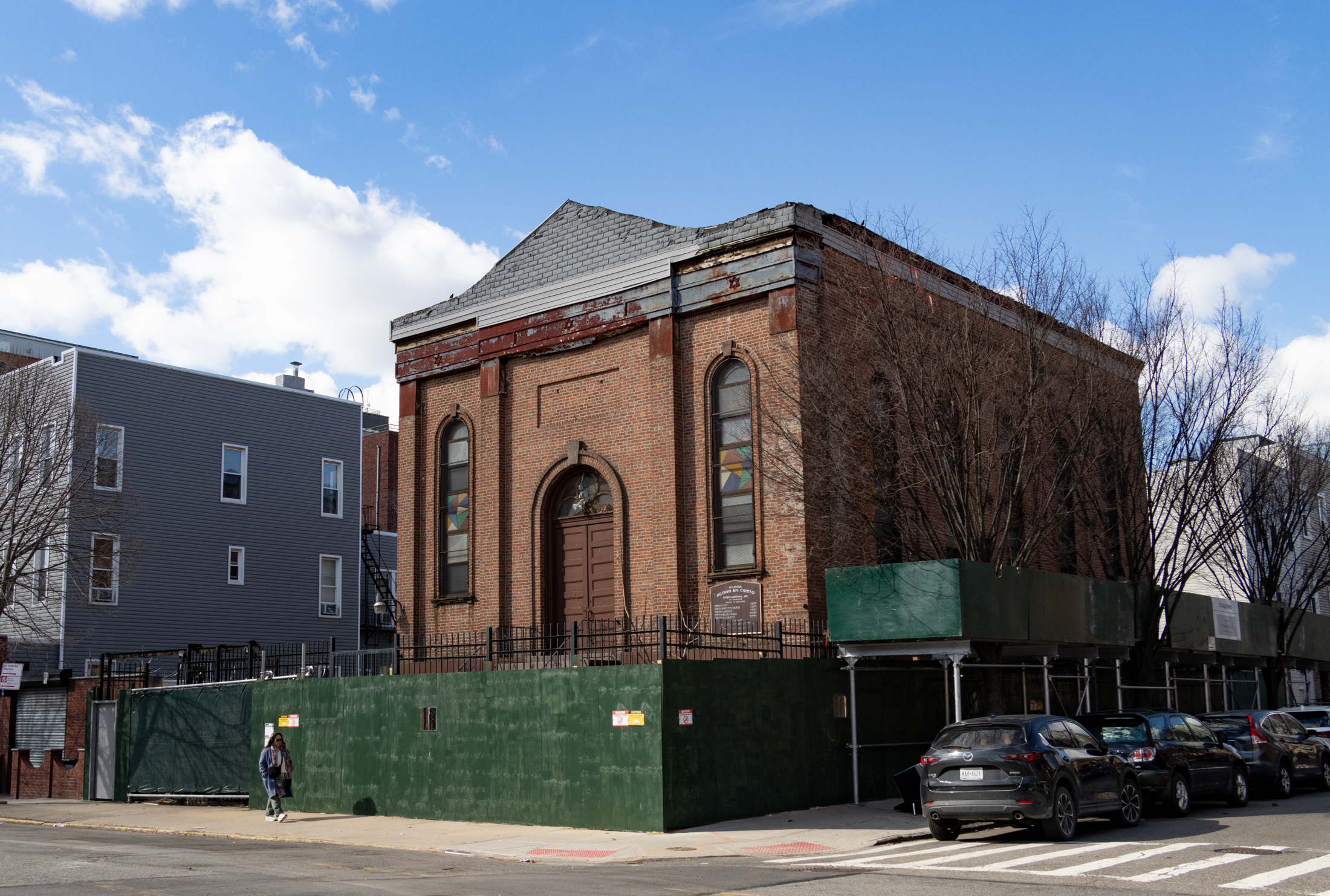Building of the Day: 33-35 Grand Street
Brooklyn, one building at a time. Name: Former North Side Savings Bank Address: 33-35 Grand Street Cross Streets: Whythe and Kent Avenues Neighborhood: Williamsburg Year Built: 1889 Architectural Style: Romanesque Revival Architect: Theobald Engelhardt Other Buildings by Architect: Arion Hall, Ulmer Brewery complex, Cook mansion, and a multitude of row houses, tenements, mansions, loft buildings,…

Brooklyn, one building at a time.
Name: Former North Side Savings Bank
Address: 33-35 Grand Street
Cross Streets: Whythe and Kent Avenues
Neighborhood: Williamsburg
Year Built: 1889
Architectural Style: Romanesque Revival
Architect: Theobald Engelhardt
Other Buildings by Architect: Arion Hall, Ulmer Brewery complex, Cook mansion, and a multitude of row houses, tenements, mansions, loft buildings, churches, breweries and factories, mostly in Williamsburg, Bushwick and eastern Bedford Stuyvesant.
Landmarked: No
The story: Although many of Brooklyn’s historic bank buildings are quite large and very often quite impressive, that’s not always the case. A successful bank building was one that inspired confidence in the institution and was the bank’s most visible advertisement. Who’s going to trust their money with a bank that physically doesn’t inspire confidence, and looks like it will collapse into insolvency? Some institutions were started with the idea that the customer was more concerned with who was running the bank, rather than who designed it, or what it looked like. Fortunately, here, we have the best of both.
The North Side Bank of Brooklyn was chartered in 1889. This building was its first office, and was headquarters for the bank even when it opened other branches. The founders, who were all from Williamsburg or nearby, wanted a bank on Grand Street, Williamsburg’s busy commercial street. Many of the other banks native to Williamsburg were located on or near Broadway, but being over here, near the area’s industrial heart, gave the new bank better access to a whole range of depositors.
Most importantly, they got all of the traffic coming from the ferry to Manhattan, only a couple of blocks away. Everyone walked right by here. Smart thinking. The bank did so well that they were soon able to open branches. One was over with the rest of the banks, on Broadway and Lorimar, and the other on Grand, near Graham Avenue. Although quite fancy for the street, this is not a huge impressive bank building. It is a really good building, though, one that has survived pretty much intact, in spite of all of the area’s changes over the last century.
It was the product of the inventive mind of Theobald Engelhardt, the master architect of the Eastern District, which included parts of Williamsburg, Bushwick and Bedford Stuyvesant. He built all kinds of buildings for the bankers, brewers, factory owners, businessmen, churchmen and homeowners of the area. You can’t go down a street in the area without passing his buildings, they are literally everywhere. For at least forty years, Engelhardt was the go-to architect in these parts, and he always did excellent work.
Unlike the Classically inspired temple of money that George Post designed for the Williamsburgh Savings Bank, Engelhardt designed a Romanesque Revival gem that was much more suited for the area. It’s gritty and industrial, faced in rough cut stone, only two stories tall. Keeping with the idea of the might of industrial materials, he used a profusion of wrought iron on all of the windows and doors, and then capped it off, literally, with a huge pressed metal pediment. It’s really quite a statement, and to this day inspires a double-take.
The North Side Bank did quite well for itself until 1922, when it was acquired by the Manufacturer’s Trust Bank. This bank, founded in Brooklyn as Citizen’s Trust, in 1905, grew even faster and better than North Side. They were one of four local banks that merged into Manufacturer’s Trust, creating the largest commercial bank in Brooklyn. All of the branches stayed open. Manufacturer’s Trust became Manufacturers Hanover Trust, which became Chemical Bank, which became Chase Manhattan, which became J.P. Morgan Chase.
The building didn’t survive all of those mergers, and closed to banking. It was an outlet store for the French clothing brand A.P.C. for several years. Fortunately, there will be no Duane Reades or McDonald’s opening in here. For the last few years, the building has been a successful events space, for weddings and special occasions, art shows, photo shoots and the like. There is also a rather large apartment upstairs. GMAP
(Photo: Wallyg on Flickr)












What's Your Take? Leave a Comment